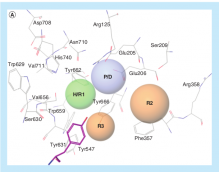Mining large databases to find new leads with low similarity to known actives: application to find new DPP-IV inhibitors.
A new article just published at Future Med. Chem.
Mining large databases to find new leads with low similarity to known actives: application to find new DPP-IV inhibitors. Ojeda-Montes MJ, Casanova-Martí À, Gimeno A, Tomás-Hernández S, Cereto-Massagué A, Wolber G, Beltrán-Debón R, Valls C, Mulero M, Pinent M, Pujadas G, Garcia-Vallvé S. Future Med Chem. 2019 Jun;11(12):1387-1401. doi: 10.4155/fmc-2018-0597.
Abstract
Aim: Fragment-based drug design or bioisosteric replacement is used to find new actives with low (or no) similarity to existing ones but requires the synthesis of nonexisting compounds to prove their predicted bioactivity. Protein-ligand docking or pharmacophore screening are alternatives but they can become computationally expensive when applied to very large databases such as ZINC. Therefore, fast strategies are necessary to find new leads in such databases. Materials & methods: We designed a computational strategy to find lead molecules with very low (or no) similarity to existing actives and applied it to DPP-IV. Results: The bioactivity assays confirm that this strategy finds new leads for DPP-IV inhibitors. Conclusion: This computational strategy reduces the time of finding new lead molecules.

